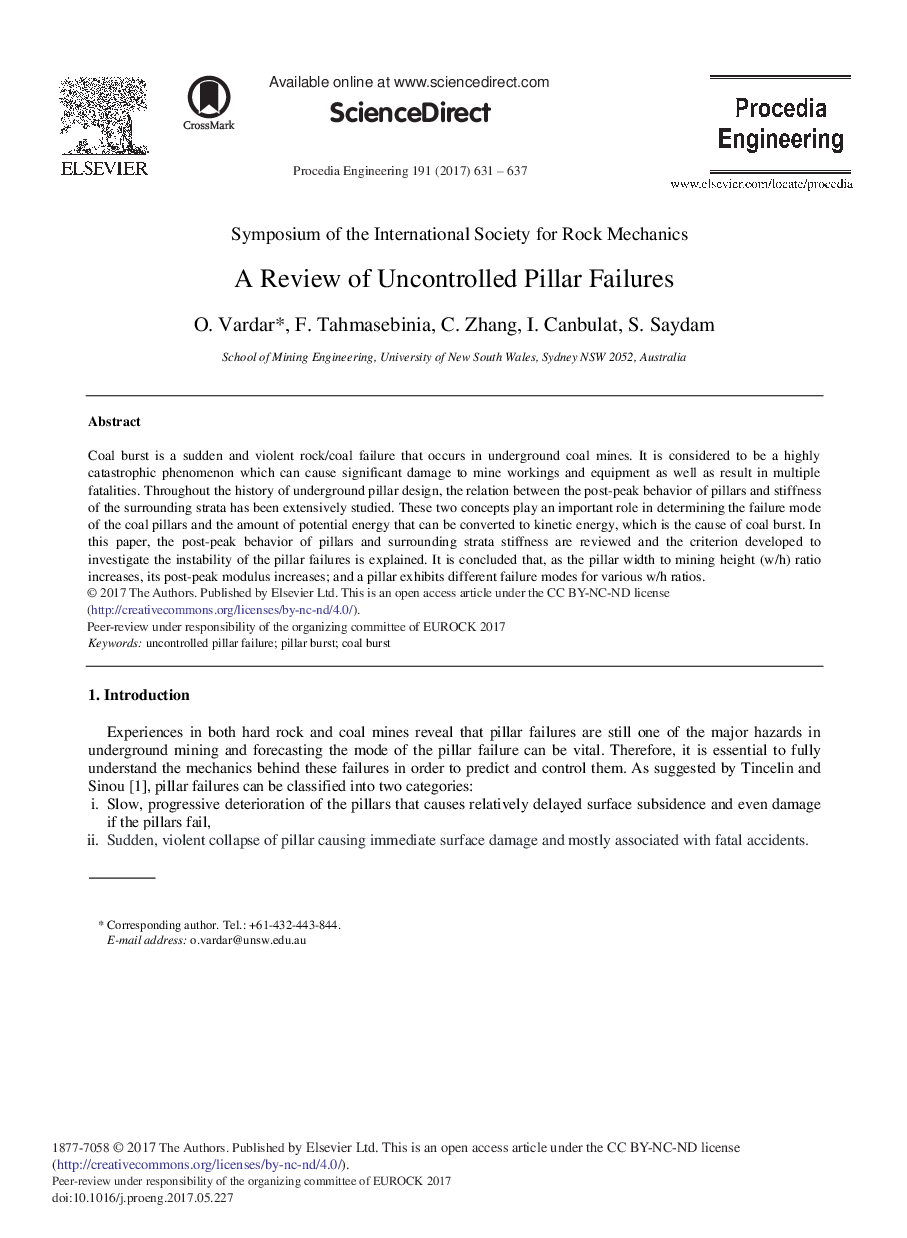| Article ID | Journal | Published Year | Pages | File Type |
|---|---|---|---|---|
| 5027553 | Procedia Engineering | 2017 | 7 Pages |
Abstract
Coal burst is a sudden and violent rock/coal failure that occurs in underground coal mines. It is considered to be a highly catastrophic phenomenon which can cause significant damage to mine workings and equipment as well as result in multiple fatalities. Throughout the history of underground pillar design, the relation between the post-peak behavior of pillars and stiffness of the surrounding strata has been extensively studied. These two concepts play an important role in determining the failure mode of the coal pillars and the amount of potential energy that can be converted to kinetic energy, which is the cause of coal burst. In this paper, the post-peak behavior of pillars and surrounding strata stiffness are reviewed and the criterion developed to investigate the instability of the pillar failures is explained. It is concluded that, as the pillar width to mining height (w/h) ratio increases, its post-peak modulus increases; and a pillar exhibits different failure modes for various w/h ratios.
Keywords
Related Topics
Physical Sciences and Engineering
Engineering
Engineering (General)
Authors
O. Vardar, F. Tahmasebinia, C. Zhang, I. Canbulat, S. Saydam,
